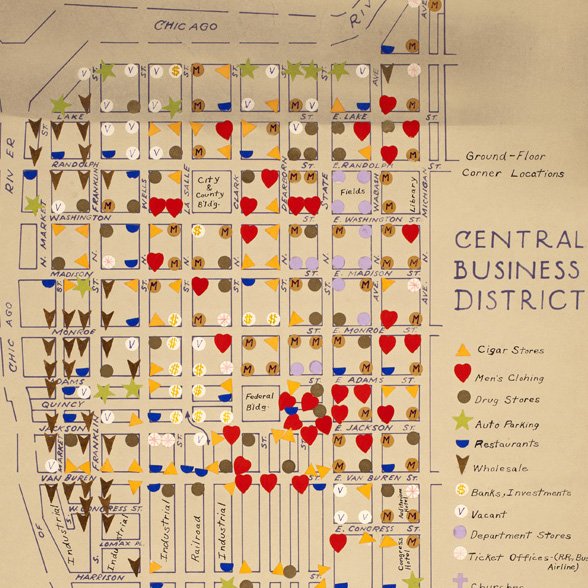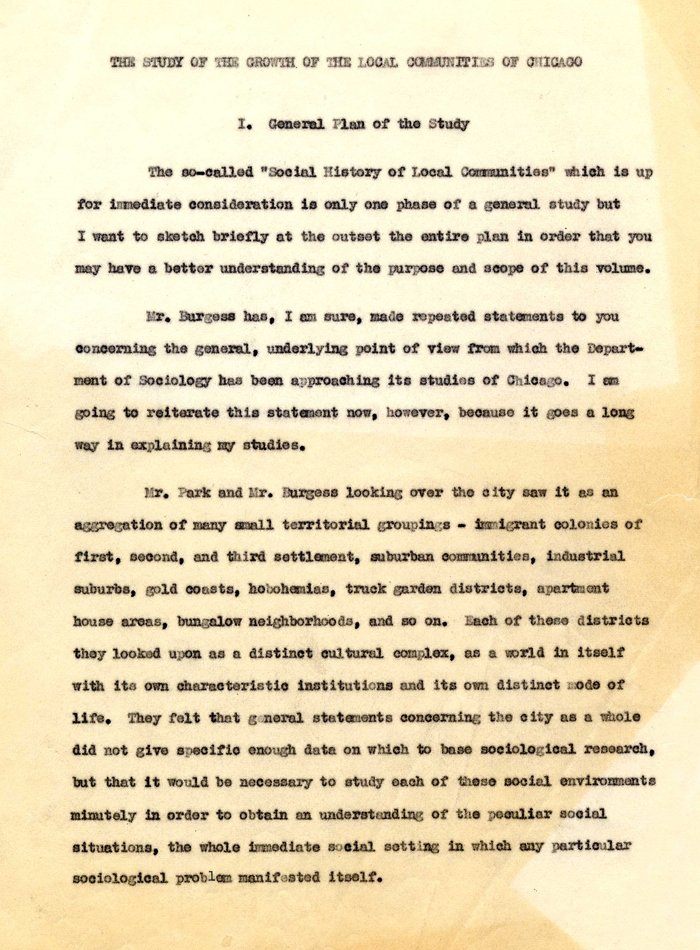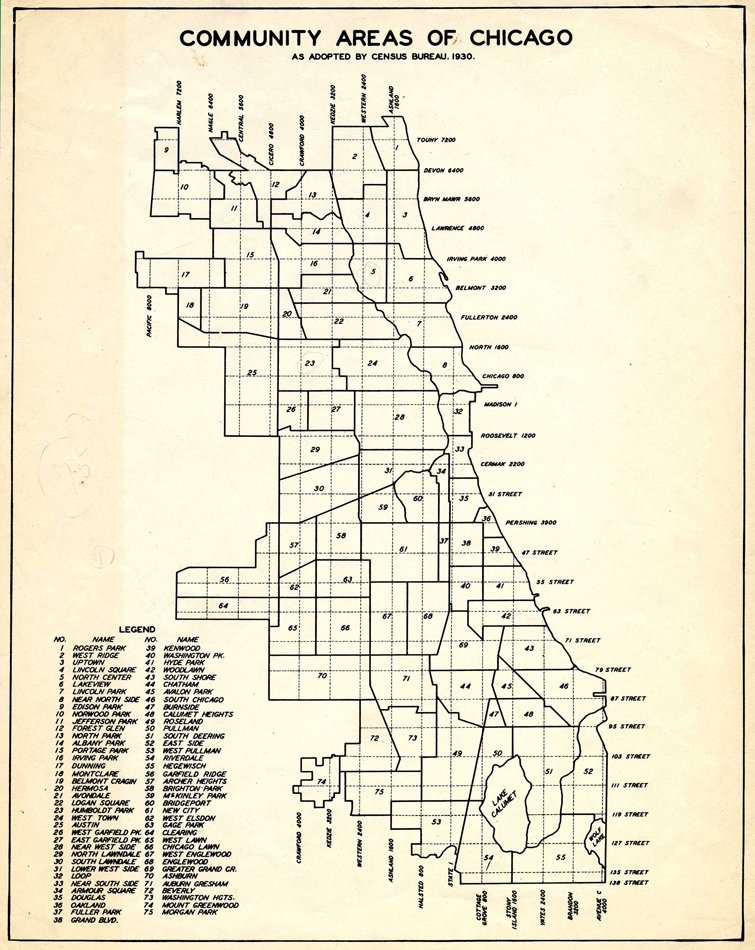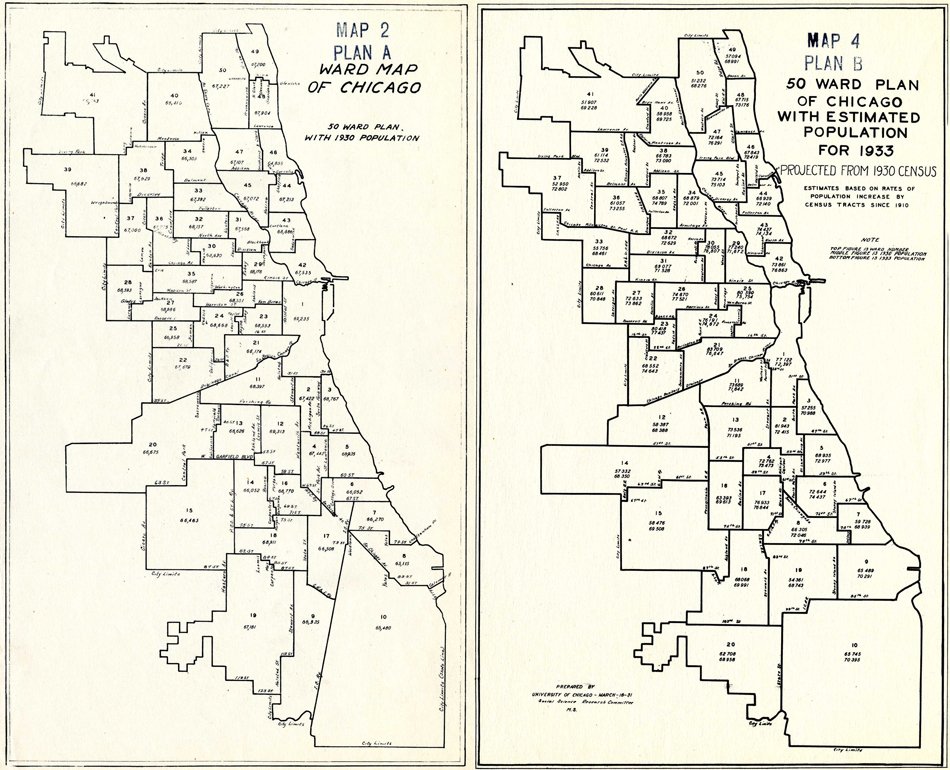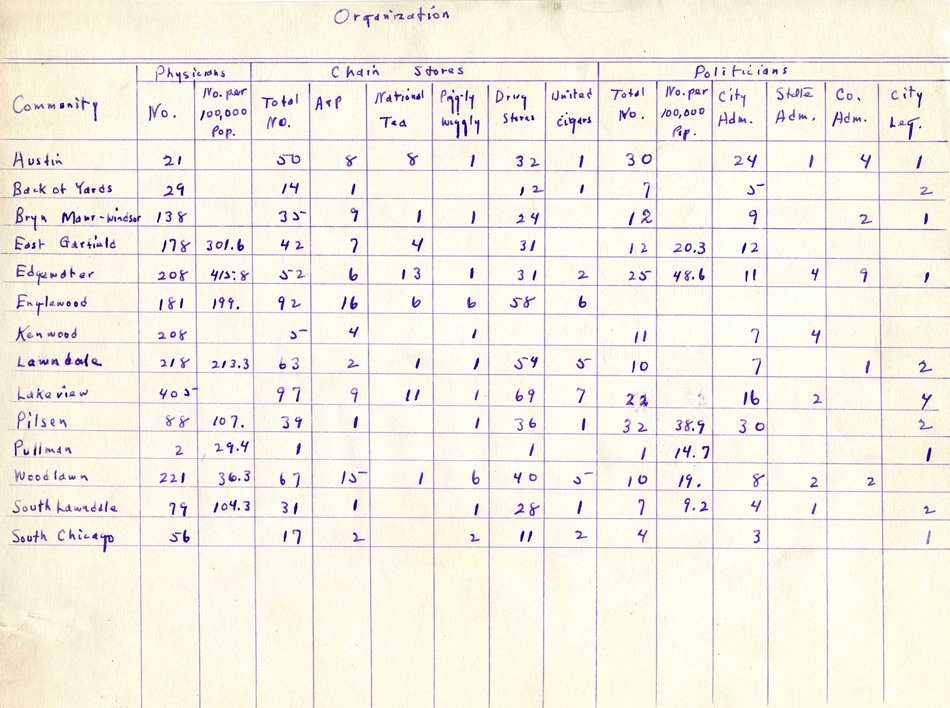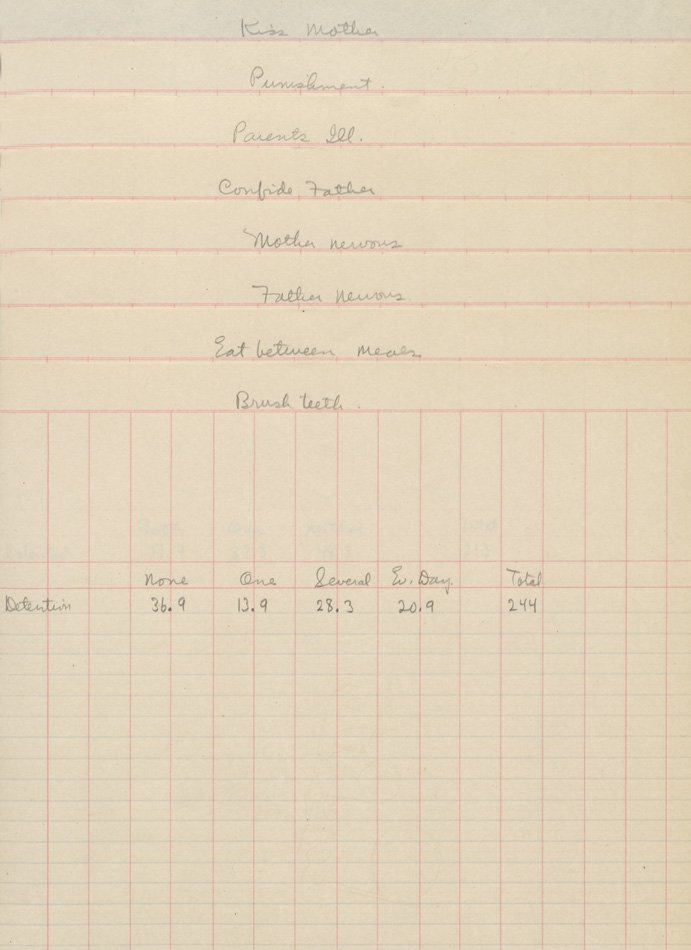The Local Community
Robert Park asserted that the city represented a new type of community and, due to its large size, was comprised of many smaller communities. The sociology students devoted much of their research effort to the exploration of these smaller communities.
Ernest Burgess spent decades looking for a statistical basis for these local communities. The material at hand was statistics for city blocks that came from the decennial U.S. Census. The census aggregated those statistics to City Wards. Wards were not useful sociological units; municipal government could re-draw ward boundaries from time to time and furthermore, wards did not correspond with people's communities.
Burgess cooperated with the U.S Census Bureau as they created Census Tracts, approximating neighborhoods. Using these new units, Burgess and the students explored the city looking for the boundaries of local areas. Eventually they divided Chicago into 75 Community Areas, each with its own name. Over the years one of those areas was divided into two and O'Hare International Airport was added to the city so now there are 77 Community Areas. These areas have been absorbed into the city's traditions, so that now they are used in real estate marketing, city administration, journalism, as well as in social research.
Demography, the study of population, was emerging as a new science in the decade of the 1920s. Some population facts came from the decennial U.S. Census and others from Chicago's Board of Health. Chicago school sociologists used elementary population statistics such as birth and death rates as tools with which to describe and analyze local communities.
